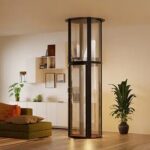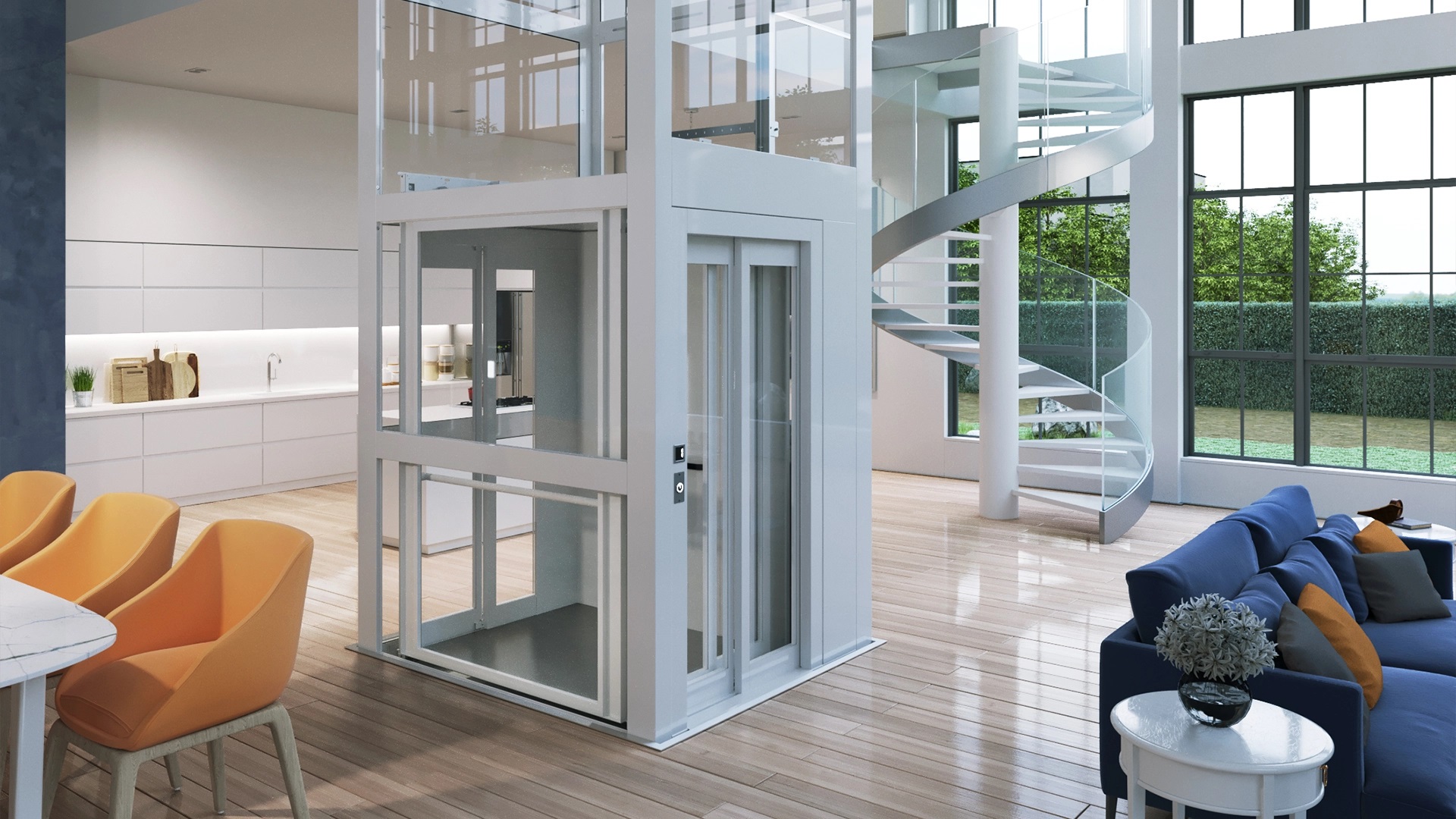When considering the best way to make your home more accessible, especially for elderly family members or individuals with mobility challenges, the decision often boils down to two popular options: home lifts and stair lifts. Both solutions are designed to help people move between floors in their homes with ease, but each comes with its own set of benefits, limitations, and costs. So, how do you decide which one is the right fit for your home?
In this blog post, we will explore the differences between home lifts and stair lifts, helping you determine which is the best solution based on your specific needs, space, budget, and long-term requirements.
What Are Home Lifts?
A home lift (also called a residential elevator) is a fully functioning lift system that transports individuals or objects between floors of a home. It’s typically installed in homes that have multiple levels, whether they are standalone houses, townhouses, or apartments. Home lifts can be designed to accommodate multiple people, heavy loads, or even wheelchairs, making them a more versatile and durable solution than stair lifts.
Key Features of Home Lifts:
- Capacity: Home lifts generally have a larger weight capacity, often ranging from 250 kg to 500 kg, which can accommodate more than one person or allow for the transport of goods.
- Design and Customization: Home lifts offer more design flexibility. They can be customized to match your home’s aesthetic and fit within the available space, such as in a dedicated lift shaft or an existing closet or stairwell.
- Accessibility: Home lifts are ideal for people with severe mobility challenges. They are spacious and can be used for transporting people in wheelchairs, with walkers, or those who need extra support.
What Are Stair Lifts?
A stair lift is a chair that travels along a rail mounted to the staircase. It is designed for individuals who have difficulty climbing stairs but can still walk or sit on a chair with ease. Stair lifts are primarily for personal use and are generally not designed to carry multiple people at once. The chair moves along the stairway on a motorized track, allowing users to sit comfortably while being transported between floors.
Key Features of Stair Lifts:
- Compact and Space-Efficient: Stair lifts are mounted along the existing staircase and don’t require a significant amount of space outside of the stairway itself. They’re ideal for homes where installing a home lift might not be feasible due to limited space.
- Lower Cost: Stair lifts are generally more affordable than home lifts, both in terms of installation and maintenance. This makes them an attractive option for people who need a cost-effective mobility solution.
- Simplicity and Ease of Use: Stair lifts are simple to operate, often requiring just the push of a button to ascend or descend the stairs. Some models even have swivel chairs, making it easy to get in and out at the top or bottom of the stairs.
Comparing Home Lifts vs. Stair Lifts: Which Is Right for You?
1. Space and Layout of Your Home
One of the primary factors to consider when choosing between a home lift and a stair lift is the layout and space available in your home.
- Home Lifts: If you have enough space and a dedicated area for installation, a home lift can be a more permanent, elegant, and practical solution for multiple floors. Home lifts typically require a shaft or pit for installation, which means you’ll need sufficient space in your home to accommodate the system. If you’re building a new home or renovating an existing one, a home lift might be easier to integrate.
- Stair Lifts: Stair lifts are perfect for homes where space is tight. They don’t require significant construction and can be installed directly on your stairs without the need for a dedicated shaft. Stair lifts are ideal for homes with narrow staircases, especially if you don’t want to undergo major home renovations. A stair lift doesn’t require a large footprint, which makes it more practical for smaller homes or apartments with limited space.
2. Level of Mobility Needs
Your personal mobility needs will heavily influence which option is best for you.
- Home Lifts: Home lifts are typically the better choice for individuals with more severe mobility issues. For example, someone in a wheelchair or with advanced difficulty walking will benefit from the spaciousness of a home lift. Home lifts provide ample room and allow for full independence as they can accommodate various mobility devices (wheelchairs, walkers, etc.) comfortably. In addition, home lifts are usually more comfortable for individuals who may need assistance in getting into or out of a seat.
- Stair Lifts: Stair lifts are better suited for people who still have some ability to walk and can sit and stand without much assistance. They are designed for individuals who can independently manage sitting down and standing up. A stair lift will give them a simple and cost-effective way to navigate stairs without needing to rely on assistance from others. However, if you or your loved one requires a wheelchair, stair lifts may not be the best option unless they are equipped with a special wheelchair lift.
3. Cost of Installation and Maintenance
Cost is a significant factor in making this decision, and this includes both the initial installation cost as well as maintenance expenses over time.
- Home Lifts: Installing a home lift can be a considerable investment. The cost of a residential elevator varies depending on factors like the type of lift (hydraulic, traction, vacuum), the number of floors, the level of customization, and the construction required. On average, the cost of installing a home lift can range from RM 30,000 to RM 150,000 (or more) in Malaysia, including installation and basic customization. Maintenance and repairs for home lifts can also be more expensive compared to stair lifts due to the complexity of the systems involved.
- Stair Lifts: Stair lifts are more affordable upfront, with installation costs typically ranging from RM 8,000 to RM 20,000 for a straight staircase, and slightly higher for curved staircases. Stair lifts have lower maintenance costs, and because they are simpler systems, they are generally easier and less expensive to repair.
If you’re on a tight budget or are looking for a temporary solution, a stair lift can provide immediate relief at a much lower cost. However, if you’re planning to stay in the home for the long term or if you require a more permanent and versatile solution, a home lift might offer better long-term value.
4. Long-Term Use and Value
The long-term value of each option is another important consideration. Home lifts are often seen as a long-term investment that increases the overall value of your property. Not only can a home lift enhance the accessibility of your home, but it also adds a level of luxury that could make your property more appealing to potential buyers if you decide to sell.
Stair lifts, on the other hand, are typically seen as a temporary solution. They can be installed quickly, but if you’re planning to live in your current home for many years, the limitations of stair lifts might become more apparent as your mobility needs change. Additionally, stair lifts do not add value to your property the same way home lifts do, and they may need to be removed if you sell your home.
5. Ease of Use
Both home lifts and stair lifts are designed to make moving between floors easier, but they do so in different ways.
- Home Lifts: These lifts are simple to use and often come with features like push-button controls, remote operation, and automatic doors, making them convenient for people with varying mobility levels. They also offer a smooth, comfortable ride between floors, making them a great choice for anyone who values ease and comfort.
- Stair Lifts: Stair lifts are very easy to use, with simple controls that are typically located on the armrest of the chair. Many stair lift models also come with a swivel seat for easier entry and exit, as well as additional safety features like seat belts and footrests.
6. Aesthetics
If aesthetics are important to you, home lifts have the edge. They are more customizable and can be designed to match your home’s decor. You can choose from various finishes, cabin styles, and even the type of door (such as glass or metal). Home lifts can become a beautiful feature in your home.
Stair lifts, while practical, tend to be more utilitarian in appearance. Though some models are designed to blend with home interiors, the rail system and chair may not offer the same level of visual appeal as a home lift.
Conclusion
Ultimately, the choice between a home lift and a stair lift depends on your specific needs, budget, available space, and long-term goals. If you require a more permanent, spacious, and versatile solution, a home lift is likely the better option. However, if you need a more affordable, space-saving solution for a shorter-term need, a stair lift could be the perfect choice.
Consider consulting with a mobility expert or lift specialist to evaluate your home’s layout, your mobility requirements, and your budget. Whether you opt for a home lift or stair lift, both solutions can greatly enhance your independence, comfort, and safety in your home.

 How to Choose the Right Window Replacement Contractor
How to Choose the Right Window Replacement Contractor  The Best Aircon servicing Singapore Maintaining Coolness by Performing Top-Quality Maintenance
The Best Aircon servicing Singapore Maintaining Coolness by Performing Top-Quality Maintenance  Why Columbus Homeowners Are Falling in Love with Epoxy Garage Floor Coatings
Why Columbus Homeowners Are Falling in Love with Epoxy Garage Floor Coatings  Flood Cleaning Services in Fort Worth, TX: Essential Steps to Restore Your Home
Flood Cleaning Services in Fort Worth, TX: Essential Steps to Restore Your Home  The Benefits of Caesarstone Quartz: Style, Strength, and Sustainability
The Benefits of Caesarstone Quartz: Style, Strength, and Sustainability  Are Home Elevators Worth the Investment? A Canadian Homeowner’s Guide
Are Home Elevators Worth the Investment? A Canadian Homeowner’s Guide  5 Common Gutter Problems That Gutter Guards Can Solve
5 Common Gutter Problems That Gutter Guards Can Solve  How a Whole-House Humidifier Can Help With Your Health
How a Whole-House Humidifier Can Help With Your Health  Master Bathroom Remodeling: Essential Tips for a Stylish Upgrade
Master Bathroom Remodeling: Essential Tips for a Stylish Upgrade 